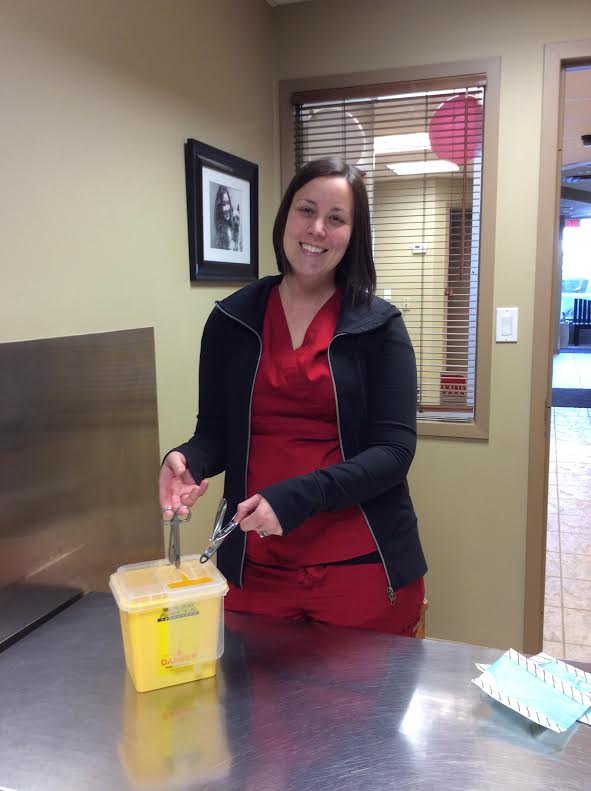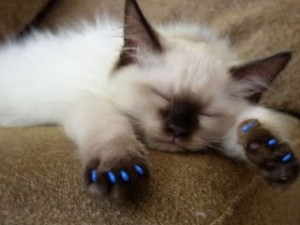
Shanna, one of RVT’s, disposing of our declaw instruments
One of the most controversial topics we talk to owners about is declawing cats. Over the years we have declawed many cats, including the occasional staff pet. We have always felt as though we were doing the best we could for our patients, pain medication prior to the procedure, freezing each paw first, three days of post-surgical of pain medication delivered as a constant rate intravenous infusion and a week of pain medication at home. However, over time products have become available to allow cats to keep their claws while keeping the peace at home. As a group we sat back and thought about why we declaw cats. Is this in the best interest of our patients? Is this a cosmetic procedure similar to ear cropping and tail docking? Where do we draw the line?
When a cat is declawed, it is not just the claw that is removed. The entire first knuckle is removed. Despite aggressive pain control, cats can develop phantom pain later in life. There is also risk of infection or the surgical sites opening as well as the potential to have small pieces of bone left behind. Declawed cats will still show their dislike for certain things by biting or scratching with their hind legs. Despite this, in the past we felt as though because we were making the procedure as pain free as it could be, we would rather the pet have the surgery done here correctly, versus elsewhere where the pain control might not be adequate. That being said, many cats seem to do just fine after being declawed. All of my cats growing up were declawed, it was just what was done at the time of their spay or neuter. All my cats lived long, happy lives. They were all very loving and cuddly and certainly bonded to our family.
After evaluating all sides and weighing the pros and the cons, as a group we have decided to no longer offer elective declawing surgery. We feel this is in the best interest of our feline patients and that our team can educate feline owners on other alternatives to prevent their cats from scratching:
Frequent Nail Trims: Our team can show you how to trim your cats nails, or you can have them clipped here. This usually needs to be done every 4-6 weeks.
Applying Soft Paws: soft plastic caps that are temporarily glued over the nails. These caps will last several weeks and can be reapplied at home or during a quick visit with one of our technicians.

Scratching posts: Cats can be trained to use scratching posts. Spraying them with cat nip spray, wrapping them in the type of fabric the cat likes to scratch or trying both vertical and horizontal scratching pads.
Feliway: Feliway is an appeasing pheromone that helps to decrease stress in cats.
Provide other stimulating areas in the house: We recommend checking out the indoor cat initiative website for great ideas on keeping your indoor cats happy and stimulated.
We truly hope that our clients understand that we made this decision because we are fully dedicated to our patient’s health and we always advocate for their best interests.
If you have any questions about declawing or how to prevent your cat from scratching at home, please call us or your family veterinarian for advice.




